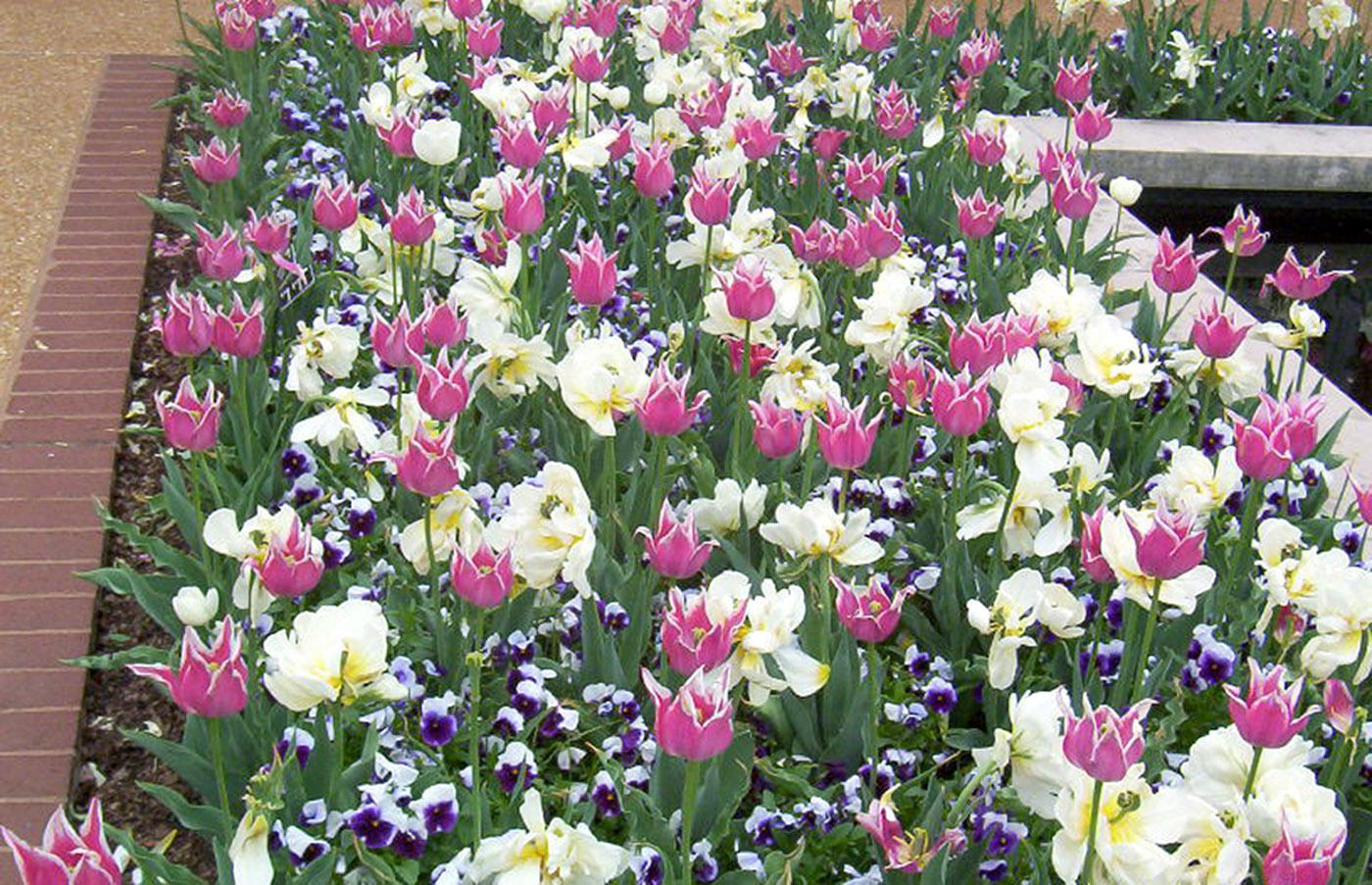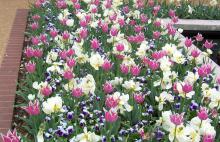Information Possibly Outdated
The information presented on this page was originally released on March 18, 2010. It may not be outdated, but please search our site for more current information. If you plan to quote or reference this information in a publication, please check with the Extension specialist or author before proceeding.
Accessorize gardens with spring-flowering bulbs
Spring is one of my favorite times in the garden as the transition begins from a long, cold winter to gardens full of flowers in summertime.
Mississippi has many plant species that bloom very early in the year when the temperatures are still fairly cool. Tulips, daffodils, crocus and hyacinth color the garden when there are few other flowers. However, the downside to these wonderful spring-flowering plants is the foliage begins to look ratty after the flowers are spent.
I’m frequently being asked these days when gardeners should remove leaves from daffodils and other bulb species after flowering. My response generally elicits a gasp of horror from the concerned homeowner when I reply, “Don't touch those daffodil leaves.”
The foliage, no matter how ratty it looks, is vital for flowering next year. There are advocates who say cutting off half the foliage or folding it in half and securing it with rubber bands will not affect subsequent years’ flowering. I tend to be a purist regarding daffodil foliage and advise that foliage be left alone.
Once a week, gently tug on the foliage; if it readily comes loose, it is time to remove it. Those leaves are gathering sunlight from the ever-lengthening days, and through the miracle of photosynthesis, converting light energy into sugars used to replenish and increase the size of the bulb. To completely replenish the bulb, the leaves must remain intact for at least six weeks.
Deadheading, the removal of spent flower heads, is important for maximizing the stored sugars in the bulb. Deadhead hyacinths, daffodils and tulips to avoid energy being wasted on seed production.
So now you know why I give homeowners this bad news, but what are you supposed to do about it? To borrow an idea from the apparel industry, we need to accessorize our spring-flowering bulbs.
A neat trick I learned while visiting the Missouri Botanic Garden in St. Louis is to interplant bulbs with early spring annuals. At MGB, they plant pansies once their tulips and daffodils have begun to emerge. By waiting for these plants to peek out of the soil, the garden staff does not damage any of the tulips or daffodils. The pansies provide cover and color before the tulips flower, and then help hide the foliage as it begins its decline.
You could also interplant your bulbs with flowering perennials that would hide the declining foliage of the bulbs. Perennials require less work in the garden than planting annuals each year.
Remember that gardening should be fun. The garden is a place to try new plants and different plant combinations. Accessorizing your spring-flowering bulbs gives you the opportunity to try different plant combinations.
The worst thing that can happen is you do not like the combination you created. The remedy is very easy -- try something else next year.








